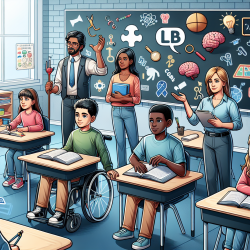Introduction
As practitioners in the field of speech-language pathology, our mission is to create the best possible outcomes for children. A recent study titled "Autistic preschoolers’ engagement and language use in gross motor versus symbolic play settings" offers valuable insights that can help us achieve this goal. This blog will delve into the study's findings and provide actionable steps to enhance engagement and language use in autistic preschoolers.
Understanding the Study
The study compared the engagement states and number of utterances produced by 70 autistic children aged 25-57 months during play with symbolic toys versus gross motor toys. The researchers videotaped natural play interactions between the children and their parents, analyzing engagement states and spoken language using continuous time-tagged video coding and language sample analysis.
Key Findings
- Autistic children were more likely to engage with caregivers in play environments with gross motor toys.
- Children spent more time unengaged in gross motor settings compared to symbolic settings.
- In symbolic play settings, children focused more on objects.
- No significant difference was found in the total number of utterances between the two play settings.
Implications for Practitioners
These findings highlight the importance of considering play settings when working with autistic preschoolers. Here are some practical steps practitioners can take:
- Utilize Gross Motor Play: Incorporate more gross motor activities in therapy sessions to increase caregiver engagement. Activities like jumping on a trampoline or playing with a large exercise ball can facilitate more interaction between the child and caregiver.
- Balance Play Settings: While gross motor play enhances caregiver engagement, symbolic play can help children focus on objects. A balanced approach can provide a well-rounded developmental experience.
- Customize Therapy Plans: Tailor therapy plans to include both types of play settings based on the child's individual needs and preferences. This personalized approach can maximize engagement and language development.
Encouraging Further Research
While this study provides valuable insights, it also underscores the need for further research. Future studies could explore the qualitative differences in language use across different play settings and investigate the long-term effects of varied play environments on social engagement and language development.
Conclusion
Incorporating the findings from this study into clinical practice can significantly enhance the social engagement and language development of autistic preschoolers. By understanding the impact of different play settings, practitioners can make data-driven decisions that lead to better outcomes for the children they serve.
To read the original research paper, please follow this link: Autistic preschoolers’ engagement and language use in gross motor versus symbolic play settings.










